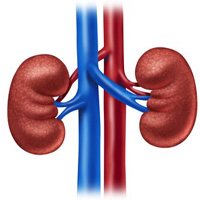Do we have a limit for retrograde intrarenal surgery for solitary kidney stone?

Accepted: June 27, 2021
All claims expressed in this article are solely those of the authors and do not necessarily represent those of their affiliated organizations, or those of the publisher, the editors and the reviewers. Any product that may be evaluated in this article or claim that may be made by its manufacturer is not guaranteed or endorsed by the publisher.
Authors
Objective: The management of urolithiasis in patients with a solitary kidney is challenging for urologists. This study aimed to evaluate the safety of retrograde intrarenal surgery (RIRS) in the treatment of stones in patients with solitary kidney and to reply to the question if there is any limit for this surgery.
Methods: Between January 2016 and December 2019, we enrolled 52 patients who had a solitary kidney and underwent RIRS. We collected data on preoperative patient characteristics, stone dimensions, and postoperative outcomes. Stone size, duration of operation, duration of fluoroscopy, type of anesthesia, and degree of surgical complication were evaluated retrospectively. Surgeries performed in less and more than 60 minutes and with and without complications were compared.
Results: A total of 52 patients with a kidney stone and a solitary kidney were evaluated. The mean stone size was 14 ± 0.4 cm and surgical success rate was 87.3%. In our study, 13 patients (24.5%) had grade 1 minor complications, and none required a blood transfusion. The mean operation time was 51.9 ± 17.3 minutes. The postoperative creatinine value increased in 6 patients. The duration of operation in the group with complications was significantly higher than that in the group without complications. In patients who underwent an operation lasting ≥ 60 minutes, stone size, fluoroscopy time, and complication rate were significantly higher than in patients who underwent an operation lasting ≤ 60 minutes.
Conclusion: Our opinion is to be careful in patients with a solitary kidney with a big stone and we recommend assigning these procedure to experienced hands for not exceeding 60 minutes in one session.
How to Cite
PAGEPress has chosen to apply the Creative Commons Attribution NonCommercial 4.0 International License (CC BY-NC 4.0) to all manuscripts to be published.

 https://doi.org/10.4081/aiua.2021.3.318
https://doi.org/10.4081/aiua.2021.3.318




